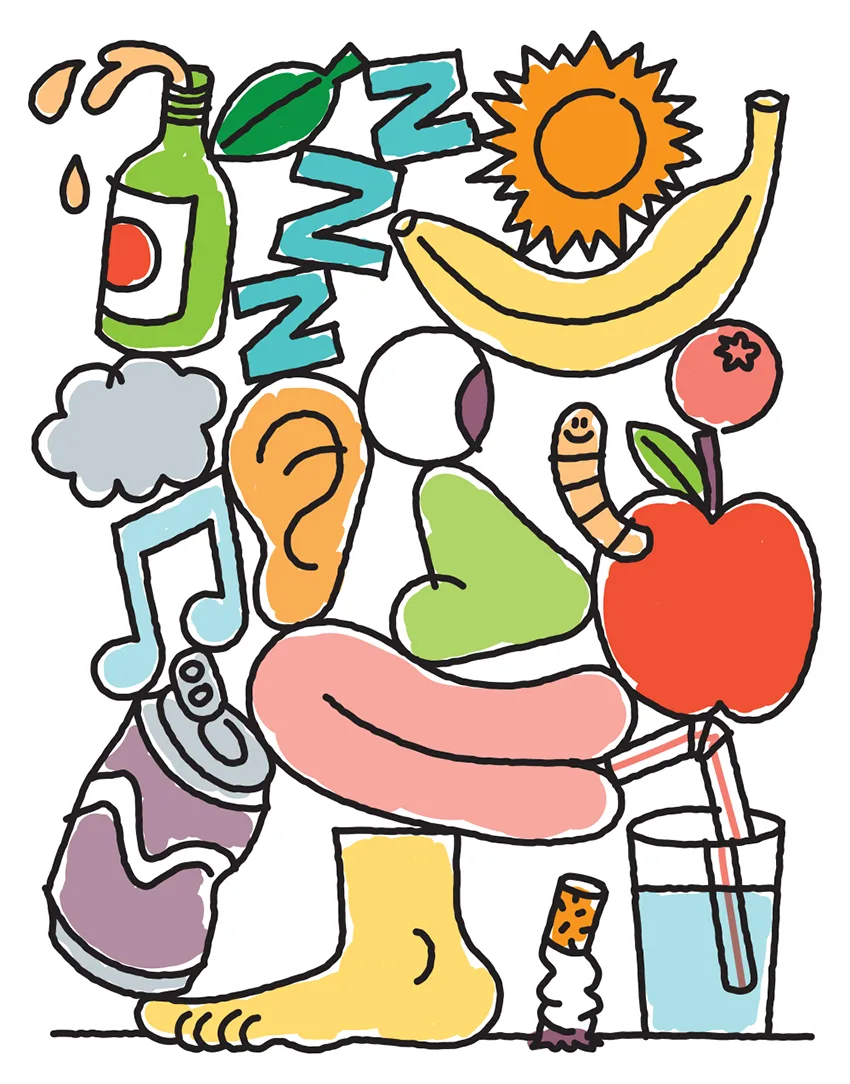

Tim Lahan lists winning the eighth grade long jump as one of his finest achievements. “I’ve no idea how it happened,” he says. “I wasn’t in any sense athletic but it was really satisfying to see the jocks so upset about it.”


Perhaps that gave him the taste for trying new things. As a graphic artist and illustrator he’s built a portfolio of client and personal work that ranges from self-publishing to painting. Although his projects cover wide variety of mediums and topics, there are recognizable motifs that reappear throughout – melting objects, bulbous rocks and, in particular, jagged lines.
“I like working with the familiar from different angles,” Tim says. ”It’s how I communicate.In a lot of my work I look for ways to draw without using a line. The jagged drawings are just a continuation of that.” He also likes the challenge of capturing “a sense of constant movement” in non-moving objects. “It’s a testament to the idea that everything is in constant motion, nothing is ever completely still.”
From Picasso to Hermann Rorschach and his famous test, creative thinkers across the centuries have been fascinated by how we see and how that can be recreated, manipulated and played with. They’ve also had to make peace with the limits of what art can do compared to the human brain. Tim says his melting objects for example are, “my way of synthesizing my frustrations about things that are out of my control.”

Some of Tim’s work, like the daily spots he’s doing for The New York Times or the designs for Ecuador’s beanie hats appears very small once it’s published or produced. But it’s not a case of taking big images and reducing them down for final use.
“I sketch really small as well,” Tim explains. “I think working really small allows you to focus on essential elements in a composition. If you’re limited to getting your point across in a two inch square space, you have to choose your lines carefully, and I think the simplicity of the final thing is the result of that.”

Tim has moved around a bit in the US, but now lives and works in San Francisco. Although it seems to make endless headlines for the wrong reasons, with the tech bubble driving up prices and, in some eyes, gentrifying the city beyond recognition, it’s a home that works for Tim.
“Most of my personal work comes from a place of friction or tension. Living in New York City for years is largely responsible for that. Before I moved to San Francisco I was living in rural Pennsylvania and sort of began to flatten out a bit in terms of stimulation and inspiration. I had to realize that being in a city and being caught in the bustle and movement drove my work.”
And although he sees the downsides of the way the city is changing, Tim also takes heart from the strong activist community standing up for a different sort of San Francisco. His torn Fences series in particular captures a sense of fighting back against the status quo.

Not that messages like this are explicit in Tim’s work. He likes to let it speak for itself where he can, although today there is a whole inspiration industry of conferences and magazines and blogs eager to get creatives talking.
“It’s important to be able to talk about your work but I think it’s more important to understand it and to be aware of what you’re putting out into the world,” Tim says.











